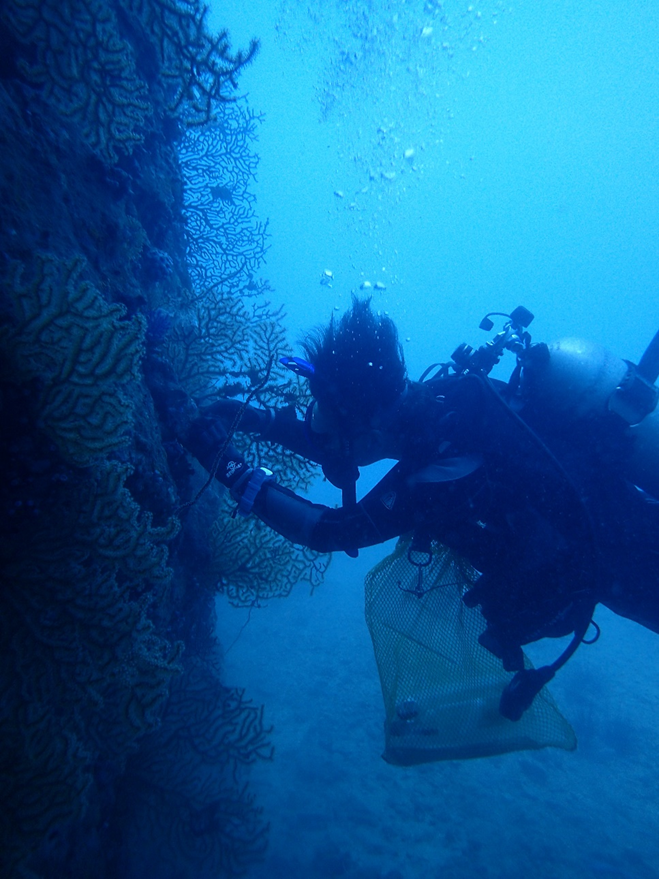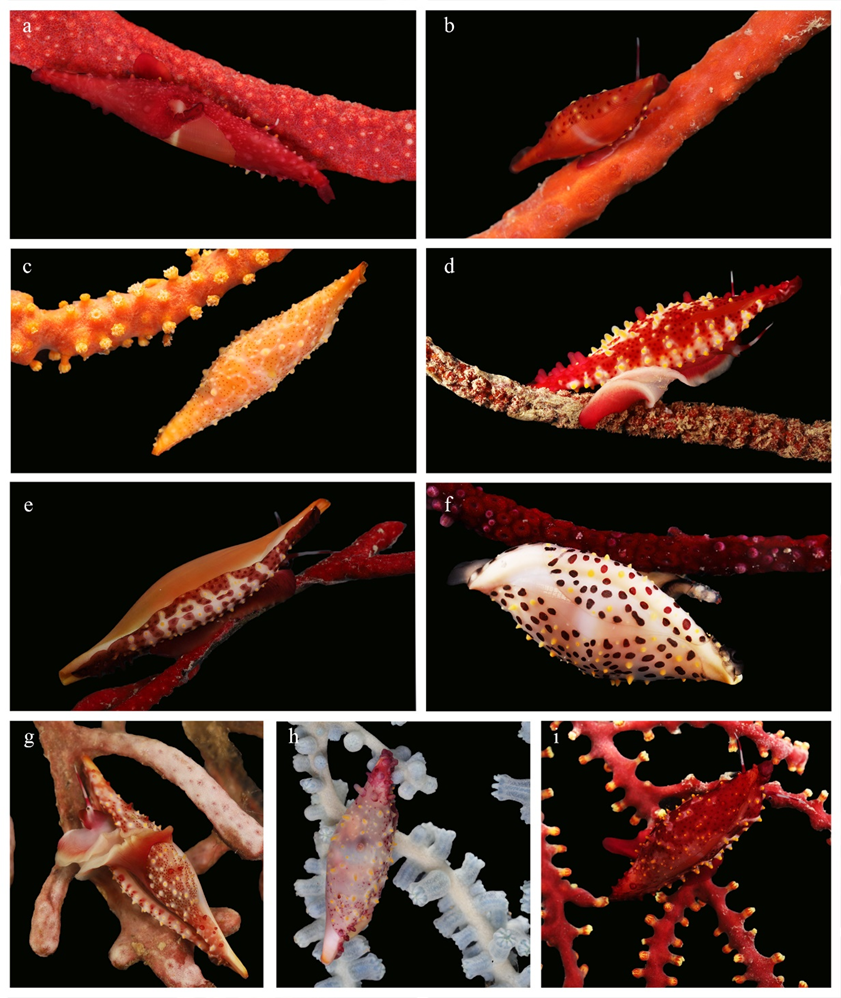
On coral reefs, where a huge number of animal species live and competition for resources is high, many organisms develop complex adaptations to protect themselves from predators. One way is to become invisible.
Sea snails of the Ovulidae family have remarkable camouflage. They reproduce the color and texture of their hosts - various and often different octacorals. Recent research by researchers from the Laboratory of Morphology and Ecology of Marine Invertebrates and the Laboratory of Studying Ecological Functions of Soils at the A.N. Severtsov Institute of Ecology and Evolution of the Russian Academy of Sciences (IEE RAS) on the coast of Vietnam has allowed us to better understand how representatives of one of the species of this family, Phenacovolva rosea, camouflage themselves.
The peculiarity of this snail is that, unlike most other species of its family, which can only live on corals of one species, it uses different corals as a host, differing in texture and color, while remaining invisible.
"We have managed to identify the mechanism of adaptation of coloration to the color of the host coral. It is associated with the fact that the mollusk, when feeding, integrates coral pigments, such as carotenoids and psittacofulvins, into its body. This discovery opens up opportunities for further study of the genetic and physiological mechanisms underlying phenotypic plasticity," shares her discovery researcher of the laboratory of morphology and ecology of marine invertebrates Sofia Zvonareva.

However, a complete match of shades does not always occur. On one of the coral species — Menella sp. — the color of the snails differed significantly more from the color of the host compared to other species, which reduced the effectiveness of the mollusks' camouflage (Figure 2). The reasons why this process is more effective on some corals than on others are not so obvious. It is possible that these discrepancies may be associated with environmental features and the inability of snails to adapt to the chemical protection of some coral species. It is also possible that snails move between corals due to the death of the previous host, but when moving, the mollusk does not have time to adapt or is forced to move to the nearest coral, which may not be optimal for the mollusk's habitat.
The work was carried out with the financial support of the Russian Science Foundation (project No. 22-74-00113).
The article based on the results was published: Zvonareva, S. S., Mekhova, S. E., & Zaitsev, S. A. (2024). Phenotypic plasticity of Phenacovolva rosea results in various camouflage efficiencies on different coral host species. Marine Biology, 171(4), 71.
